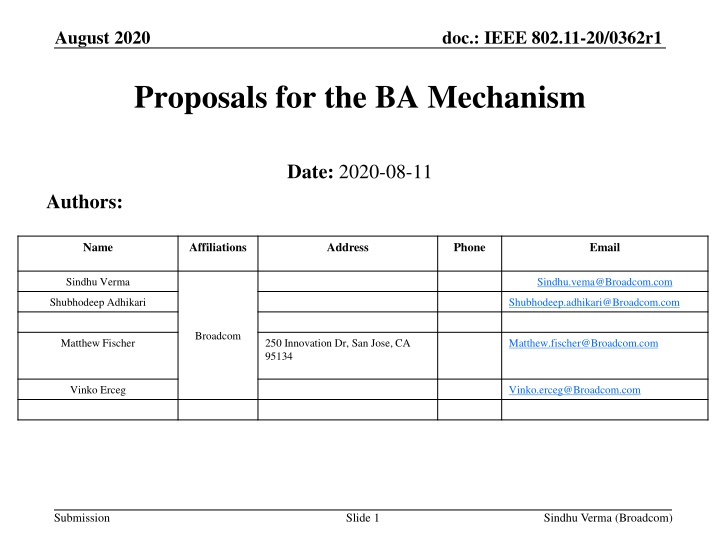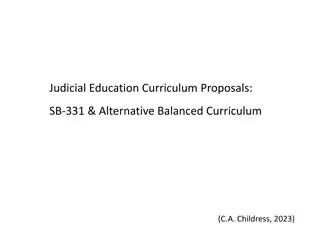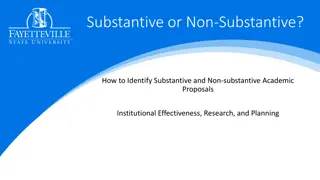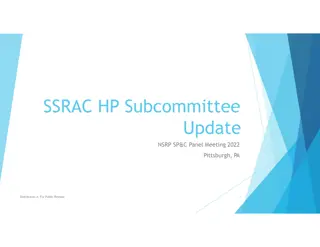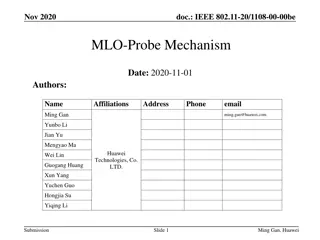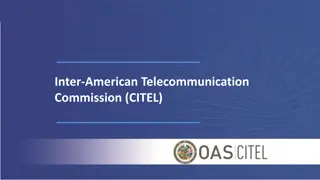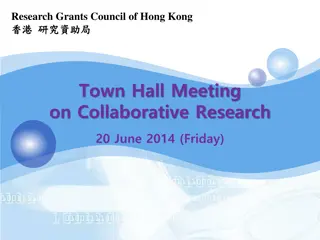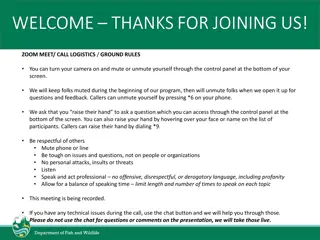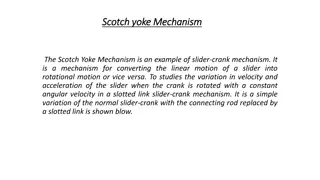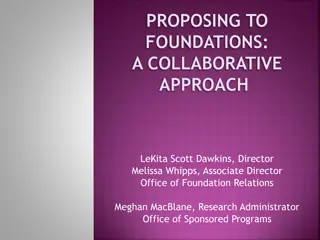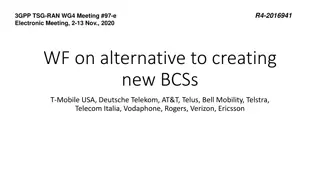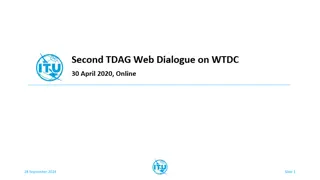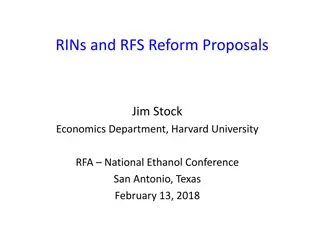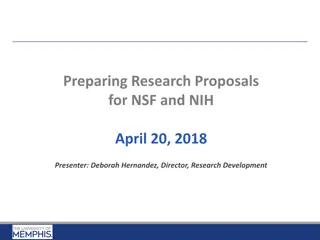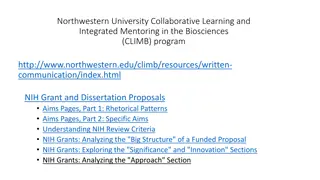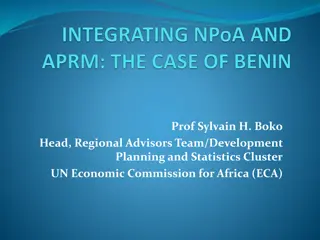Proposals for the BA Mechanism
This contribution discusses enhancements to the existing AMPDU-BA mechanism to boost efficiency for the 802.11be multi-link feature. It addresses limitations at AMPDU recipient and originator, aiming for better performance in wireless communication systems.
Download Presentation

Please find below an Image/Link to download the presentation.
The content on the website is provided AS IS for your information and personal use only. It may not be sold, licensed, or shared on other websites without obtaining consent from the author.If you encounter any issues during the download, it is possible that the publisher has removed the file from their server.
You are allowed to download the files provided on this website for personal or commercial use, subject to the condition that they are used lawfully. All files are the property of their respective owners.
The content on the website is provided AS IS for your information and personal use only. It may not be sold, licensed, or shared on other websites without obtaining consent from the author.
E N D
Presentation Transcript
doc.: IEEE 802.11-20/0362r1 August 2020 Proposals for the BA Mechanism Date: 2020-08-11 Authors: Name Affiliations Address Phone Email Sindhu Verma Sindhu.vema@Broadcom.com Shubhodeep Adhikari Shubhodeep.adhikari@Broadcom.com Broadcom Matthew Fischer 250 Innovation Dr, San Jose, CA 95134 Matthew.fischer@Broadcom.com Vinko Erceg Vinko.erceg@Broadcom.com Submission Slide 1 Sindhu Verma (Broadcom)
doc.: IEEE 802.11-20/0362r1 August 2020 Abstract This contribution discusses possible changes and enhancements to the existing AMPDU-BA mechanism to achieve improvements in efficiency related to the 802.11be multi-link feature Submission Slide 2 Sindhu Verma (Broadcom)
doc.: IEEE 802.11-20/0362r1 August 2020 Limitations at AMPDU Recipient An AMPDU recipient is required to respond with BA at SIFS after the eliciting AMPDU s PPDU A recipient might sometimes be incapable of transmitting the BA at SIFS due to RX-TX switching delay In device coexistence constraints A recipient might sometimes be incapable of receiving later MPDUs within an AMPDU due to: Internal processing limitations (e.g. processing delay beyond SIFS, based on MCS, byte count, MPDU count, etc) In-device coexistence constraints Delayed BA might have worked here, but it was deprecated and then removed from 802.11 Slide 3 Submission Sindhu Verma (Broadcom)
doc.: IEEE 802.11-20/0362r1 August 2020 Limitations At AMPDU Originator Implementation constraints of MLO may require some time margin for AMPDU construction E.g. depending on which link gains access to the channel first and with how much bandwidth To accommodate this time margin, a short AMPDU could precede a longer AMPDU Inserting SIFS+BA+SIFS between the two AMPDUs would be excessive and might cause a problem with synchronous MLD receivers Transmitting without rebuilding may cause unnecessary retransmission of MPDUs or transmission of MPDUs with unnecessary gaps in sequence numbers Submission Slide 4 Sindhu Verma (Broadcom)
doc.: IEEE 802.11-20/0362r1 August 2020 Limitations of AMPDU BA Exchange, Other (1) The LENGTH and contents of an AMPDU cannot be adjusted once the transmission of an AMPDU starts LENGTH is contained in the L-SIG. Adjustment of LENGTH and contents is useful in case of asynchronous operation on multi-link I.e. events on a linkA might impact decisions regarding transmissions on a linkB (e.g. might receive BA correctly on linkA but not on linkB, and in an asynchronous manner) Insertion of latency sensitive traffic in an ongoing transmission would help latency If the arrival of a low-latency packet is anticipated, an AMPDU can start with a shorter LENGTH which will be followed by an AMPDU with low latency traffic if available, otherwise another AMPDU of longer LENGTH of the original priority Slide 5 Submission Sindhu Verma (Broadcom)
doc.: IEEE 802.11-20/0362r1 August 2020 Limitations of AMPDU BA Exchange, Other (2) For long AMPDUs, if the initial PHY header is missed, decoding fails for the receiving device and preamble detection fails for any device performing CCA The problem can be alleviated if instead of a long AMPDU, a sequence of shorter back-to-back AMPDUs without gaps can be transmitted followed by a single composite BA. Multiple MCSs/NSSs cannot be tried together and each combination must be tried one at a time followed by a corresponding feedback Convergence of the rate control algorithm can be expedited if a composite feedback can be obtained for a back-to-back AMPDU sequence with multiple MCSs/NSSs. Submission Slide 6 Sindhu Verma (Broadcom)
doc.: IEEE 802.11-20/0362r1 August 2020 Solutions for Recipient Capability Restriction (1) Recipient scenario: Recipient cannot transmit BA after AMPDU because: Extended RX-TX delay due to high MCS, MPDU count, etc In-device coexistence Recipient solution: Recipient indicates RX limitations to AMPDU originator Maximum MPDU count, maximum byte count to meet SIFS Minimum delay, maximum delay for BA transmission In device coexistence is possible Originator allows for delayed recipient response Determines response parameters dynamically Submission Slide 7 Sindhu Verma (Broadcom)
doc.: IEEE 802.11-20/0362r1 August 2020 Solutions for Recipient Capability Restriction Originator Rules If the AMPDU originator follows the recipient s limitations E.g. transmits AMPDUs which fall below the RX-TX delay limits, and recipient has not signaled that coexistence interference is present Originator interprets lack of BA within SIFS + slot as failure Otherwise, originator interprets lack of BA as delayed BA In the case of delayed BA determination I.e. interpreted lack of BA as delayed BA Optionally continue with TXOP (i.e. after PIFS) Next PPDU to same recipient or other recipient(s) Originator assumes that the missing BA will be either: Transmitted using contention by the recipient Triggered after negotiated minimum delay x and before a maximum delay y. The expiry of maximum delay will lead to the assumption at the originator that the AMPDU is in error Whichever comes first Submission Slide 8 Sindhu Verma (Broadcom)
doc.: IEEE 802.11-20/0362r1 August 2020 Solutions for Recipient Capability Restriction Recipient Rules Recipient exercising delayed BA Optionally transmits a BA with an indication of the last processed SEQ, or otherwise indicates that delayed BA is occurring E.g. by not responding at all within SIFS Eventually transmitted BA should be cumulative in terms of ACK information E.g. if additional AMPDUs arrive before BA is transmitted Submission Slide 9 Sindhu Verma (Broadcom)
doc.: IEEE 802.11-20/0362r1 August 2020 Scenario for Originator Flexibility Originator scenario: AMPDU originator does not want BA after SIFS E.g. regardless of recipient ability to respond after SIFS E.g. to avoid destructive UL TX from recipient E.g. destructive to recipient s ongoing RX on other link E.g. while testing various MCS, NSS combinations Serial SU DL followed by MU-triggered BA responses Slow link-to-link communication regarding PPDU alignment information requiring short PPDU TX while awaiting alignment information Submission Slide 10 Sindhu Verma (Broadcom)
doc.: IEEE 802.11-20/0362r1 August 2020 Solution for Originator Flexibility Originator solution: The originator indicates delayed BA desire E.g. indication in PHY header or MAC header I.e. only to a recipient that indicates capability After signaling, the originator is free to transmit again after SIFS The originator will elicit a BA later E.g. using a similar signaling bit Maybe Ack Policy field E.g. using BAR Submission Slide 11 Sindhu Verma (Broadcom)
doc.: IEEE 802.11-20/0362r1 August 2020 Straw Poll 1 Do you support the inclusion of the following in the SFD: Recipient indication of constraints Maximum MPDU count, maximum byte count to meet SIFS Minimum delay, maximum delay for BA transmission In device coexistence is possible Originator indication within a PPDU that a BA transmission SIFS after the PPDU is not permitted Y/N/A Submission Slide 12 Sindhu Verma (Broadcom)
doc.: IEEE 802.11-20/0362r1 August 2020 Reference [1] Draft P802.11REVmd_D3.4 [2] Draft P802.11ax_D6.1 Submission Slide 13 Sindhu Verma (Broadcom)
